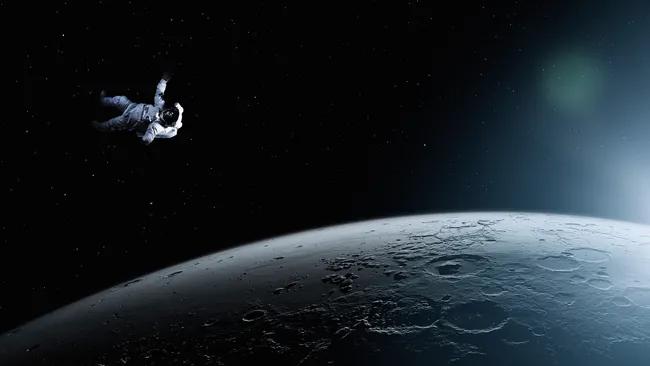What occurs to a deceased body in the vacuum of space?
Space is a harsh place, with freezing temperatures, harmful radiation and a near-vacuum. So, what would happen to the body of an astronaut that was exposed to space’s elements?
Imagine a scenario where an astronaut suddenly collapses and dies of cardiac arrest during a spacewalk. Fortunately, such an incident has never occurred. While there have been 21 deaths in space, they were caused by spacecraft malfunctions that resulted in the loss of the entire crew, rather than individual health issues. However, if a crew member were to pass away while others remained, the question arises of what should be done with the body to prevent contamination as it begins to decompose. One possible solution would be to release it into space.
In the unforgiving environment of space, how would a deceased body break down? And where would it ultimately end up? According to Jimmy Wu, the chief engineer at the Translational Research Institute for Space Health at the Baylor College of Medicine in Texas, in the low-pressure vacuum of space, any liquid on the body’s surface, such as from the skin, eyes, mouth, ears, and lungs, would instantaneously turn into gas. Even after death, blood vessels near the surface could rupture and cause bleeding.
Wu further explains that the remaining water in the body would likely freeze due to the extremely low temperatures of space, which can reach as low as minus 454.81 degrees Fahrenheit (minus 270.45 degrees Celsius). This combination of liquid loss and freezing could result in a mummified state, effectively preserving the body. Wu suggests that it may appear as a dehydrated body floating in space.
If an astronaut were exposed to space without a spacesuit, they would meet this fate. However, the subsequent course of events would depend on the presence of bacteria. Research conducted on the International Space Station (ISS) has demonstrated that bacteria can survive in space for at least three years. If bacteria were still present on the body, they would begin to decompose it. While most of space is extremely cold, certain areas can be hot, with temperatures on the surface of the ISS ranging from minus 328 F to 392 F (minus 200 C to 200 C). In a hotter environment, the process of decomposition would be significantly accelerated.

Powerful radiation in space is also likely to have a detrimental effect on the body, breaking down carbon bonds and leading to the degradation of the skin and muscles.
Once ejected from the spacecraft, the dehydrated and decomposing body would enter into orbit, following the trajectory in which it was propelled, unless it encountered another object.
Considering the abundance of space debris and satellites orbiting Earth, there is a genuine risk of a dead body colliding with one, as explained by Myles Harris, a doctoral student at the University College London Institute for Risk and Disaster Reduction, in an interview with Live Science.
To mitigate this risk, NASA advises venturing further into space and departing from planetary orbit before releasing a body. “It’s a solid object, after all,” Wu stated. A collision between a body and a spaceship or satellite could result in significant damage to both entities.
If the body manages to avoid collisions with satellites and space debris, it would gradually be pulled back towards Earth over time due to the gravitational force, particularly if the death occurred within low Earth orbit, which is approximately 1,200 miles (2,000 kilometers) or less from Earth. Eventually, during what would likely be the most dramatic phase of the cadaver’s journey through space, it would reenter the atmosphere and disintegrate.
As space exploration expands beyond Earth’s orbit, NASA is taking steps to address the issue of mortality during missions. Wu suggests that the commercial spaceflight industry should also consider developing protocols for handling death in space. While it is hoped that such situations never arise, it is crucial to be prepared for any eventuality, as Harris points out.
This article is republished from livescience under a Creative Commons license. Read the original article.
Do not forget to share your opinion with us to provide you with the best posts !



0 Comments